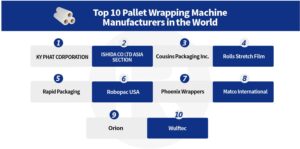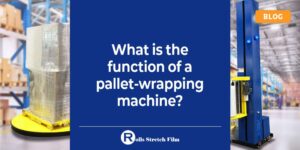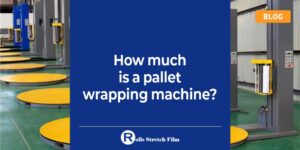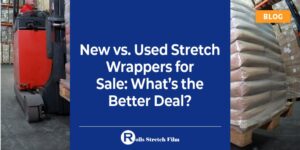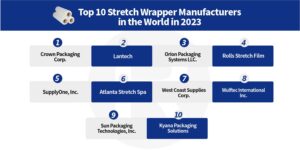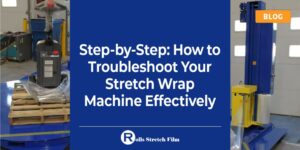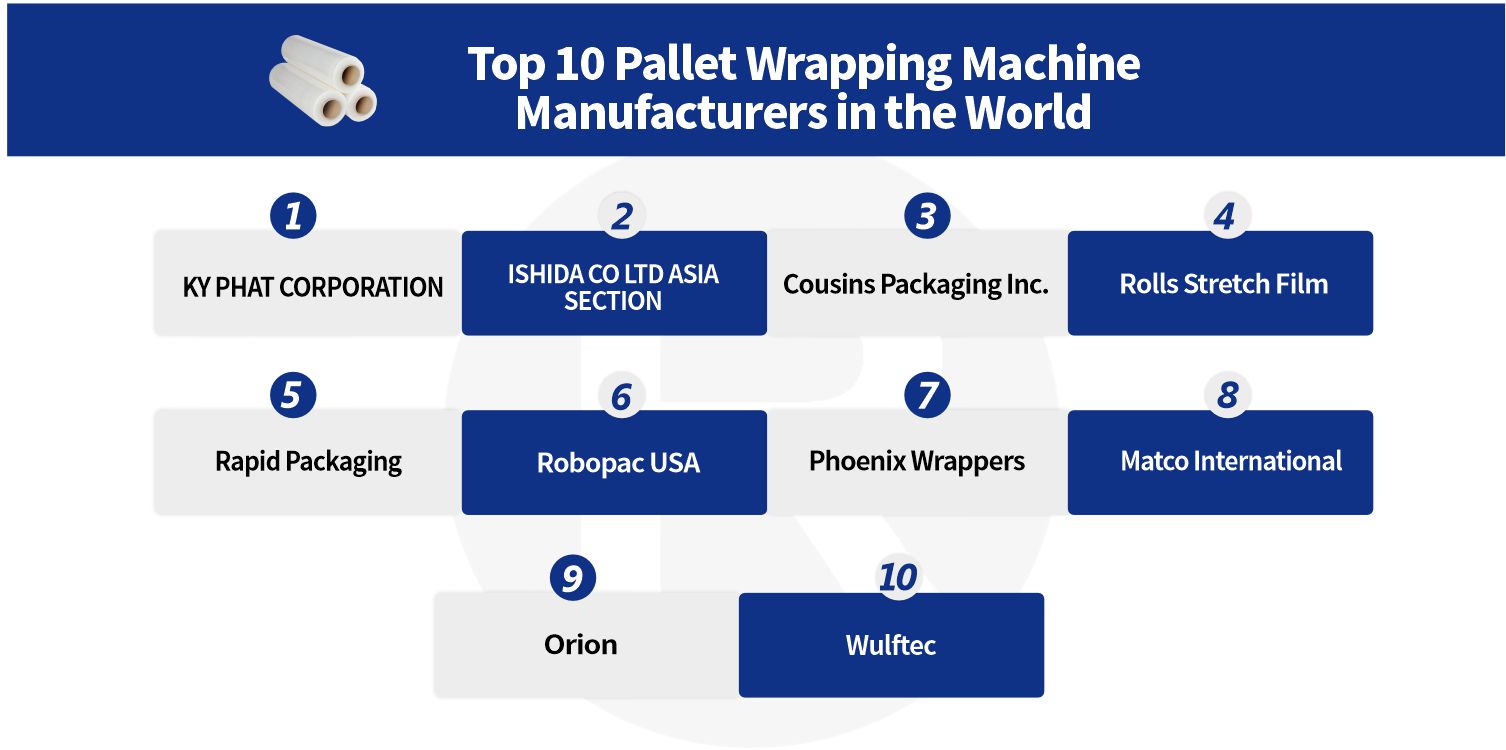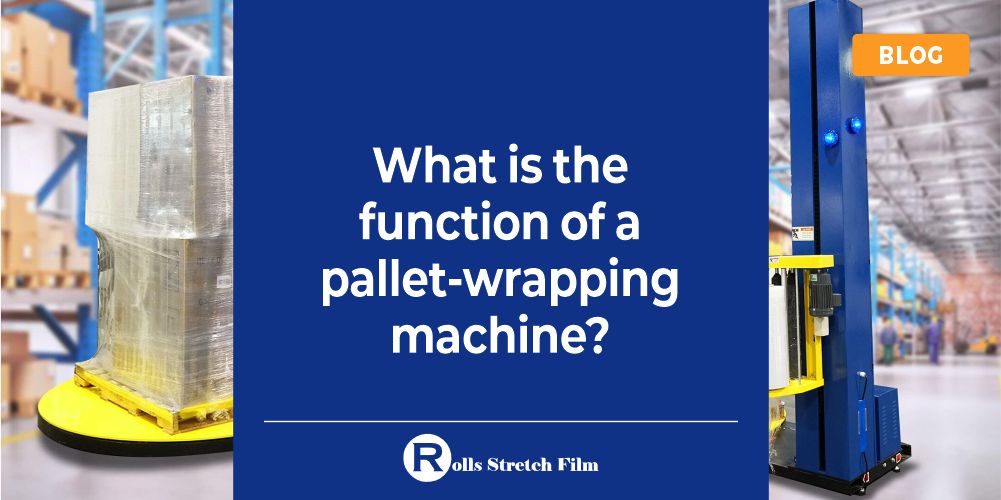If you’re looking for the best type of stretch or wrap film to secure and protect your goods during shipping, you may be debating between PVC and non-PVC wrap. Both have their advantages, so it’s important to understand the difference between PVC and non-PVC stretch wrap before making a decision.
PVC stretch film is often more cost-effective and offers greater puncture resistance, but the non-PVC stretch film is more environmentally friendly and often used for industrial applications where safety is a concern. Both offer advantages and disadvantages, so it is best to choose the one that best fits your needs.
Know more about the properties of PVC and non-PVC film. Comparing their price, performance, and environmental implications to know which one is best suited for your project!

What are PVC and Non-PVC Stretch Film
PVC (Polyvinyl Chloride) stretch wrap, also called a stretch film, is made of polyvinyl chloride (PVC). It is used to shrink wrapping multiple items in place, and it is stretchable so that it can be easily applied around multiple items without having to use a separate adhesive or tie. PVC shrink wrap also provides a tight seal around items, protecting them from dust, moisture, and other environmental factors.
Non-PVC shrink film is a type of stretch wrap that is made of non-PVC plastic most common material. This shrink wrap is designed to provide the same protection and tight seal as PVC shrink wrap but without the environmental concerns associated with PVC. Non-PVC shrink wrap is made from a variety of materials, such as low-density polyethylene, polypropylene, and nylon. This shrink wrap is also recyclable, making it a more environmentally friendly option than PVC shrink wrap.
Properties of PVC Stretch Film
A. Advantages
- Clarity and Gloss
The clarity and gloss of PVC cling film can vary depending on the manufacturing process and the quality of the resin used in the film. Generally speaking, the clarity of a cling film can range from very clear to cloudy, and the gloss from very glossy to matte.
The clarity of the shrink wrap can also be affected by the presence of additives and other ingredients used to give film-specific properties. The presence of additives can also affect the gloss of the shrink wrap, making it either more glossy or matte depending on the formulation especially if it is used as a PVC food wrap.
- High Puncture Resistance
PVC type of shrink wrap has a high puncture resistance due to its strong elasticity and tear-resistant properties. The shrink wrap is made of polyvinyl chloride (PVC) resin, which is a type of plastic. This material is very strong, making it difficult to puncture. The polyolefin shrink wrap also has a high tensile strength, which helps to prevent it from stretching or tearing when punctured.
Additionally, the film’s surface has a low coefficient of friction, making it difficult for sharp objects to penetrate it. As a result, the polyolefin shrink wrap can withstand punctures from sharp objects, such as nails and staples.
- Good Tensile Strength
PVC type of shrink wrap is a highly durable and strong film with excellent tensile strength especially if it is used as a PVC food wrap. This shrink wrap can be stretched up to 500% without breaking, providing an excellent protective barrier for the items being wrapped. Its elasticity allows it to be stretched around irregularly shaped objects, conforming to the shape and providing a tight, secure wrap.

B. Disadvantages
- Environmental Hazards
PVC plastic wrap releases toxic chemicals such as dioxins, phthalates, and vinyl chloride into the air when burned, leading to air pollution especially if it’s used as a PVC food wrap. When disposed of improperly, PVC film can end up in landfills, where it can take centuries to decompose. PVC film is not biodegradable, so it can cause harmful fumes when it enters bodies of water.
- Low UV Resistance
PVC plastic wrap has low resistance to UV radiation and will degrade quickly when exposed to direct heat. The shrink film can become less adhesive and less elastic due to UV rays, leading to a decrease in its effectiveness. The low UV resistance of the shrink wrap also means that it won’t provide long-term protection against the elements, making it less useful for outdoor applications.
- Brittleness
PVC plastic wrap is a highly brittle material, meaning it is prone to fracture and break when stretched beyond its elastic limits. When stretched, the shrink film will become thinner and weaker, and when it reaches its elastic limit, it will tear or break. This shrink wrap is not temperature resistant and can become brittle and break if exposed to temperature changes.
Properties of Non-PVC Stretch Film
A. Advantages
- Eco-Friendliness
Non-PVC cling film is made from a variety of materials such as polypropylene, linear low-density polyethylene, and biodegradable starches which are all eco-friendly. This type of shrink film is recyclable and can be reused multiple times before being discarded, making it an environmentally-friendly choice for food contact, unlike a PVC food wrap.
It is also free of toxins and volatile organic compounds, meaning it produces no harmful emissions when disposed of. Non-PVC shrink film has a low carbon footprint because it is made from renewable resources and can be recycled easily.
- High UV Resistance
Non-PVC shrink film has excellent UV resistance, meaning that it can be used outdoors without significant degradation from UV exposure. It has a high resistance to UV radiation, resisting yellowing, cracking, and other forms of degradation.
- Higher Tensile Strength
The non-PVC shrink film has a higher tensile strength than the PVC shrink film due to its unique construction. The non-PVC shrink film is made from multiple layers of low-density polyethylene, polypropylene, and polyester resins to create a stronger, more durable material just like in tissue boxes.
The multiple layers of resins also provide a higher degree of stretchability, which allows for a greater amount of tension to be applied before the film breaks. The higher tensile strength of the non-PVC shrink film also allows it to be used for heavier retail items, as the film can better handle the additional weight.
B. Disadvantages
- Inferior Clarity
The non-PVC shrink film has a lower clarity than PVC shrink film, which can make it harder to read labels through the film. Non-PVC shrink film has inferior clarity because it is made from polyethylene, which has a lower clarity than the polyvinyl chloride used to make PVC food wrap.
Polyethylene has a natural milky tint to it, which can reduce the clarity of the film when it is stretched. Additionally, the manufacturing process of polyethylene stretches the molecules of the material, which makes it less optically clear than PVC food wrap which would indicate high-fat foods on labels.
- Lower Puncture Resistance
Non-PVC shrink film has lower puncture resistance because it is made from a thin plastic material that is more susceptible to punctures and tears. The thinner material also has weaker tensile strength, making it more likely to tear when stretched or pulled. Additionally, this shrink film is typically made with fewer layers than PVC food wrap, which further reduces its puncture resistance.
- Inferior Elasticity
The non-PVC shrink film has inferior elasticity because it is made of a polymer blend that does not feature the same elasticity properties as a PVC material. Additionally, this blend is more prone to tearing and breaking due to the lower elasticity levels.
Additionally, these stretch films typically have a lower stretch ratio compared to PVC films, which means they are not able to expand to the same degree as PVC films, thus leading to inferior elasticity.

Comparison of PVC and Non-PVC Stretch Film
A. Price Comparison
The price of PVC shrink film is generally more expensive than non-PVC shrink film. The main difference between PVC and non-PVC when it comes to price is PVC film is typically sold in higher quantities, making it more expensive per roll.
Additionally, PVC film is thicker and more durable than non-PVC film, making it more expensive. Non-PVC film is typically sold in smaller quantities, making it less expensive per roll. Non-PVC shrink film is thinner, making it less expensive than PVC food wrap.
B. Performance Comparison
The performance comparison of PVC and non-PVC stretch wrap depends on the specific application. In general, PVC film will provide a higher degree of puncture and tear resistance and a better cling coefficient than non-PVC film. PVC food film also has a higher tensile strength which allows for greater load retention.
In terms of optical clarity, non-PVC food wrap has the advantage as it is usually more transparent than PVC. The PVC counterpart food wrap also tends to have better resistance to UV rays and is generally more environmentally friendly than PVC food film.
C. Environmental Implications
The environmental implications of PVC film include the release of hazardous chemicals during production, such as dioxin, as well as the toxic process of manufacturing the shrink-wrap material. PVC shrink wrap is also not a recyclable material, and thus its disposal contributes to the consumer products of additional waste. PVC can also leach chemicals into soils and waterways, introducing toxins into the environment.
Non-PVC stretch films, such as those made of polypropylene, are typically considered more environmentally friendly than PVC films. These films are recyclable and, depending on their composition, may not be made with any hazardous chemicals. These films are also generally more durable and can be reused multiple times.
It is difficult to say which is better as it depends on the application. PVC shrink film is puncture resistant, while non-PVC shrink film is more environmentally friendly. Ultimately, the best option will depend on the intended use.


